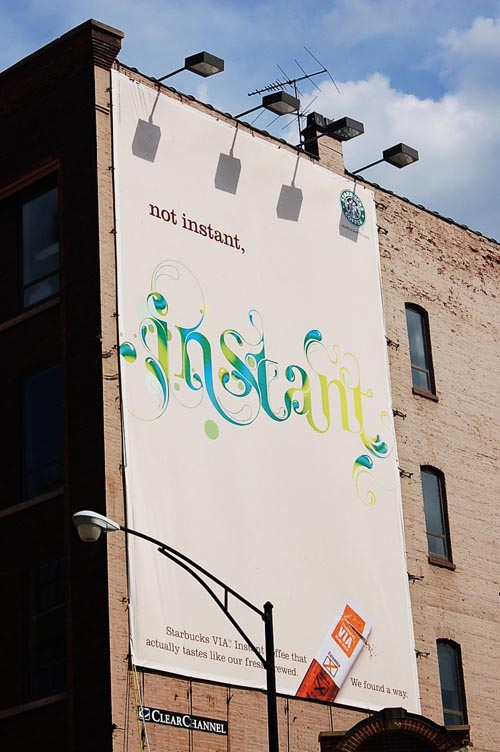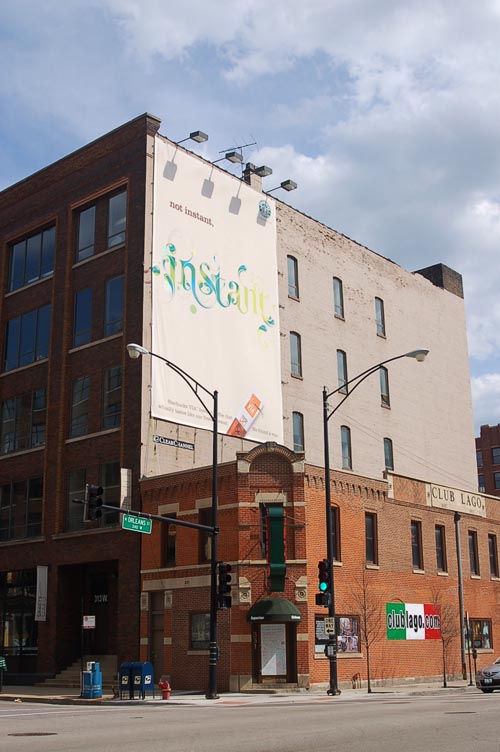
Since that I ‘m to Chicago I see everyday on the street some Starbuck coffee and sometimes I stop to buy a coffee. Because that Brand is one the best compagny to have a coffee in America and this is so important to find a good coffee there. But also I interested about this pakadging, I like the style of their graphics. I find that they are one good example of communication which give pleasure and educate the looks.


I found on some web sites about Starbuck coffee and I found this article that I think to be really interested.
Today I was really thinking on a Starbucks coffee. I really admire the whole style of this brand I decided to get material from them to show here.
I did some research and read more about their concept of designing and their team work. Actually Starbucks has two groups of designers as follow: – the global creative team that handles advertising and marketing material, products presentation and packaging; – the store design group witch is responsible for the furniture, fittings and layout of the stores.
At the creative group they have graphic designers together with technical and packaging specialists. Some of the team also bring fine art and illustration skills to the mix so that is probably why they have such a good range of products. Check it out.
Many have no doubt noticed your local Starbucks coffee cups have been sporting the company’s logo from years past. It’s part of an interesting trend in logo and visual identity nostalgia. Sports teams have been doing the same thing for years with their jerseys and in turn selling much more merchandise. Whether or not Starbucks will see an increase in sales due to the retro logo remains to be seen.
However, from an aesthetic standpoint it is interesting to see the two logos side by side. At first glance it’s obvious that two major factors have changed the logo, technology and corporate growth.
Technology as a form of change is evident in the qualities of each illustration. The former logo is clearly a hand drawing and the more familiar logo surely benefited from the crisp production of Adobe Illustrator (or Freehand).
The original features a bare breasted mermaid. It’s hard to believe that today a multi-national corporation would ever give the green light to such a logo (if not only for nostalgia’s sake). The newer mark is also much easier to reproduce in various formats and far more iconic, both features necessary for a large corporate logo.
Perhaps Starbucks is featuring the old logo to remind people that they are authentic, that they have a history, that they were not always ubiquitous and disposable. Once upon a time they had character.
Starbucks ‘ Howard Schultz posted “Staying Real in an Instant”
‘ Howard Schultz posted “Staying Real in an Instant” on Huffington Post. The story caught my attention for two reasons: it mentioned Starbucks and “simplifiers.”
on Huffington Post. The story caught my attention for two reasons: it mentioned Starbucks and “simplifiers.”
You see ‘simplifiers’ are – according to John Quelch, HBS professor and marketing expert and author of “Too Much Stuff” from The Economist which formed the basis for The Next Marketing Challenge: Selling to ‘Simplifiers’
and marketing expert and author of “Too Much Stuff” from The Economist which formed the basis for The Next Marketing Challenge: Selling to ‘Simplifiers’ – people like me.
– people like me.
He says [about me]: “She finds herself surrounded by too much stuff acquired. She is increasingly skeptical in the face of a financial meltdown that it was all worth the effort. Out will go luxury purchases, conspicuous consumption, and a trophy culture.
Tomorrow’s consumer will buy more ephemeral, less cluttering stuff: fleeting, but expensive, experiences, not heavy goods for the home.”
According to Schultz, who refers to John Quelch: “in a tough economy, consumers are redefining value. They are consuming less, and focusing more on seeking satisfying experiences that enhance their lives. He [Quelch] calls this growing segment “The Simplifiers.” They want fewer material goods, and more quality-of-life experiences. At our core, we have the right stuff to appeal to these consumers, whether it’s the respite from the world our stores provide or now with Starbucks VIA ready brew, quality coffee on-the-go.”
I admire Starbucks. They consistently deliver a perfect venti non-fat latte every time I order one. They have created a haven for me – truly a third place – particularly when I travel, and am in NYC for meetings in need of a place to chill. I love that my Dad enjoys lattes from Starbucks when I come visit and make the one block trek to their DC Starbucks for a fix.
I love, too, that they relentlessly try to redefine the Starbucks experience and improve the value they deliver to remain relevant to Starbucks customers.
In this article, Schultz addresses Starbucks’ introduction of instant coffee. Now, for me, instant is not how I do coffee. My coffee is more about the steamed milk blending with the coffee than just coffee [the intensity of the sensory experience brings to mind a scene from Ally McBeal ]. The closest I’ve gotten to ‘instant’ is via a Starbucks drive-thru or an airport Starbucks – both of which still offer me the ‘third place’ vibe.
]. The closest I’ve gotten to ‘instant’ is via a Starbucks drive-thru or an airport Starbucks – both of which still offer me the ‘third place’ vibe.
Nonetheless, I admire the company’s willingness to explore unusual ways to connect with a distinct consumer zeitgeist “without forsaking their core values.”
Some of why I despise instant coffee is that it tastes despicably bad. Perhaps this Starbucks instant product – when mixed with steamed or very hot milk – might recreate the Starbucks in-store latte? I could definitely get into that! A guaranteed latte experience regardless of location? Wow! Take a step back.
Quality and efficiency? A guaranteed practical experience? Yes, that definitely appeals to my sense of simplification. After all, I am a simplifier. I’ve written about the paradox of choice [most recently Refocus Product: Retail As Curator & Less But Better and last year Why Variety Matters For [Retail] Selection
and last year Why Variety Matters For [Retail] Selection ]. I am drowing in stuff. Everywhere I turn, there are too many choices to select from. Don’t you yearn for relief from all of the stuff that surrounds you? Do you feel that we are drowning in possessions [see What Happens When Experience Economy Meets Recession Economy?
]. I am drowing in stuff. Everywhere I turn, there are too many choices to select from. Don’t you yearn for relief from all of the stuff that surrounds you? Do you feel that we are drowning in possessions [see What Happens When Experience Economy Meets Recession Economy? ]?
]?
I also value quality over quantity. Who wouldn’t? Quality is more environmentally responsible, too. Perhaps challenging, but also an opportunity as “Too Much Stuff? Enter the ‘Simplifier’ states in Octopus : that this is the “great proving ground for truly authentic brands —those that deliver an honest and fair value, and an engaging, distinctive experience for the buyer.”
: that this is the “great proving ground for truly authentic brands —those that deliver an honest and fair value, and an engaging, distinctive experience for the buyer.”
Something that Starbucks is attempting with its instant product.
Something I believe we all strive for as we simplify, refocus and deliver outstanding value to customers.
Something that represents a true competitive advantage…
Related article: Four steps to living a more frugal life by Denise Ryan, Canwest News Service from 11/29/2008
by Denise Ryan, Canwest News Service from 11/29/2008















